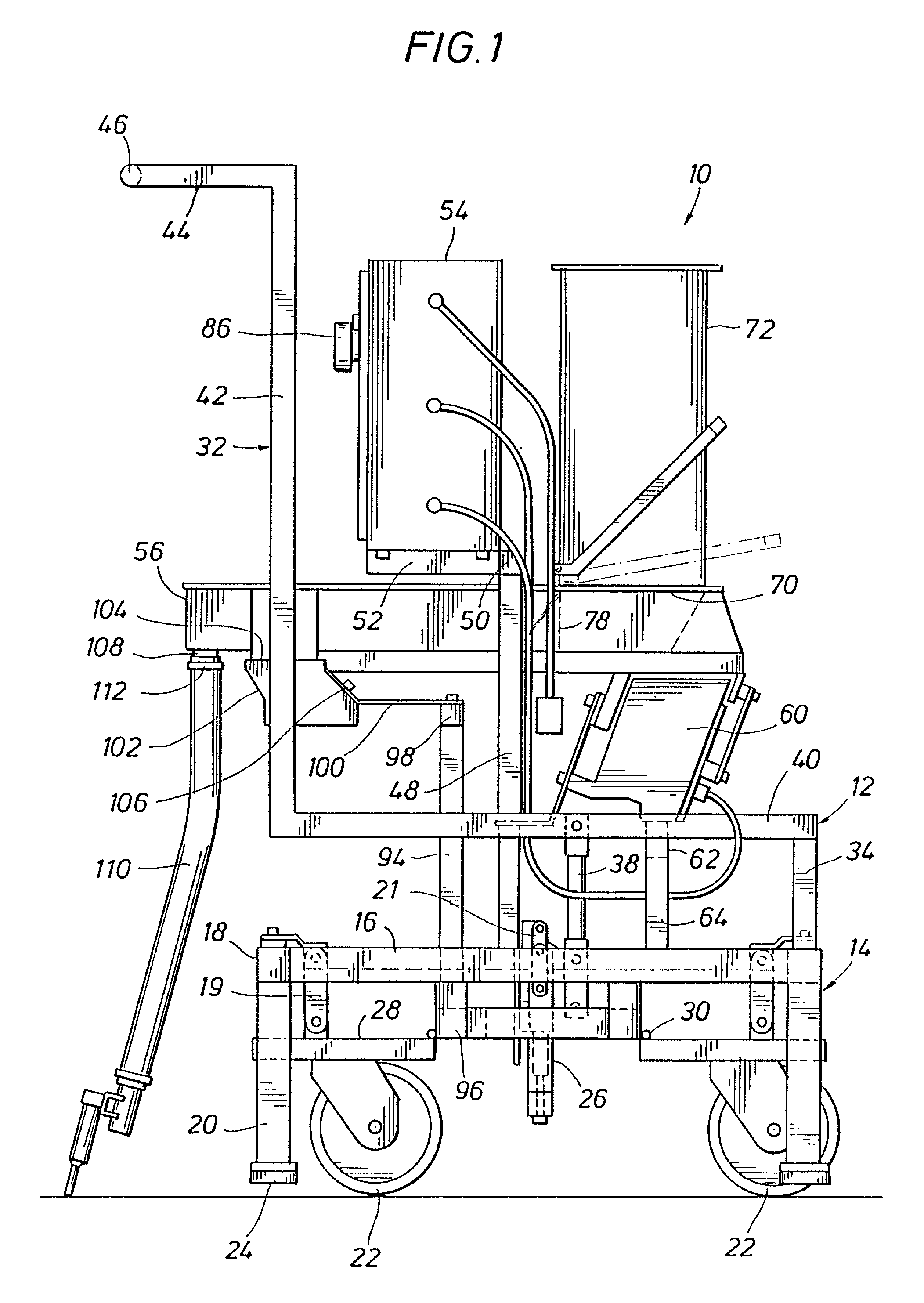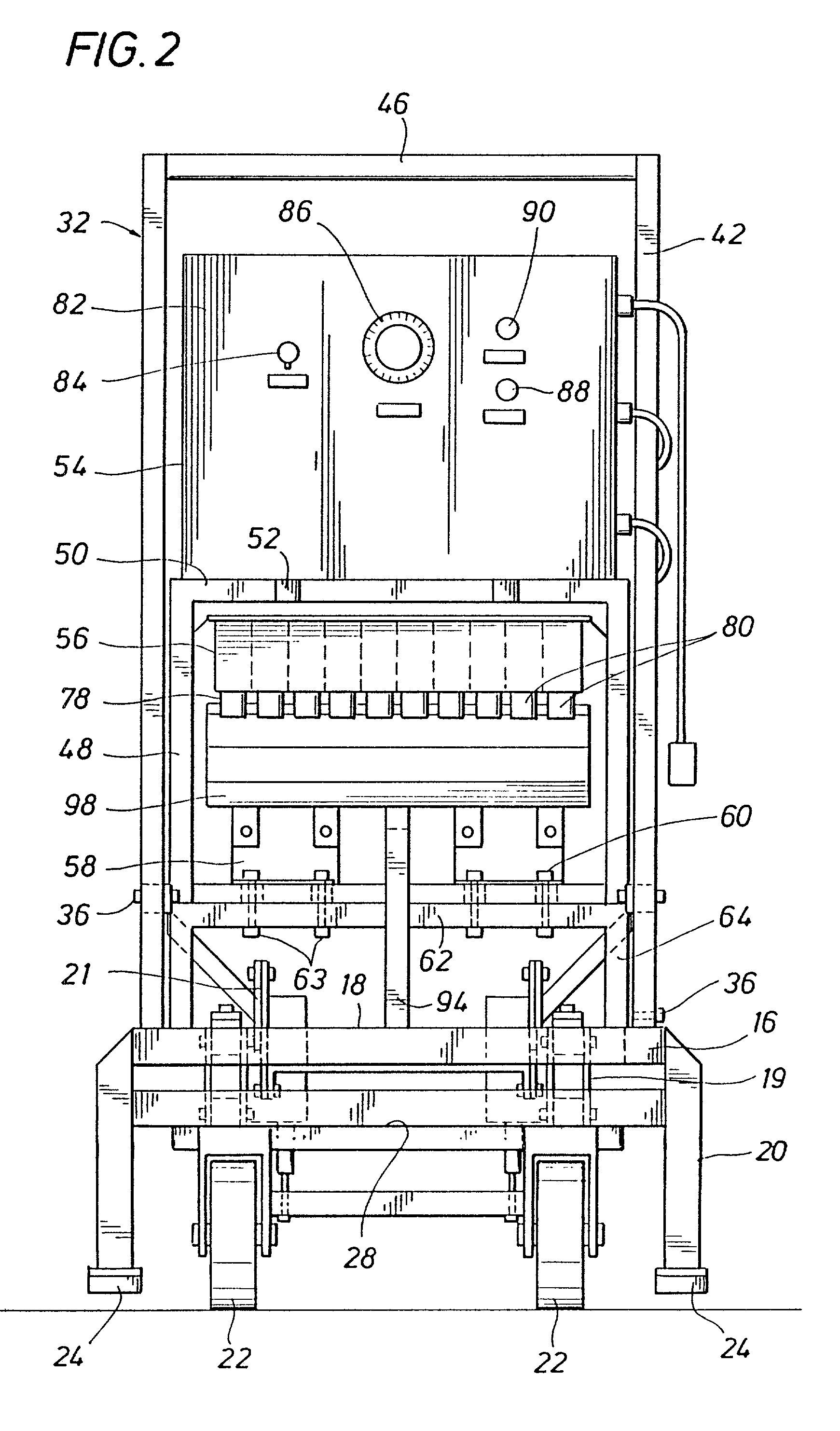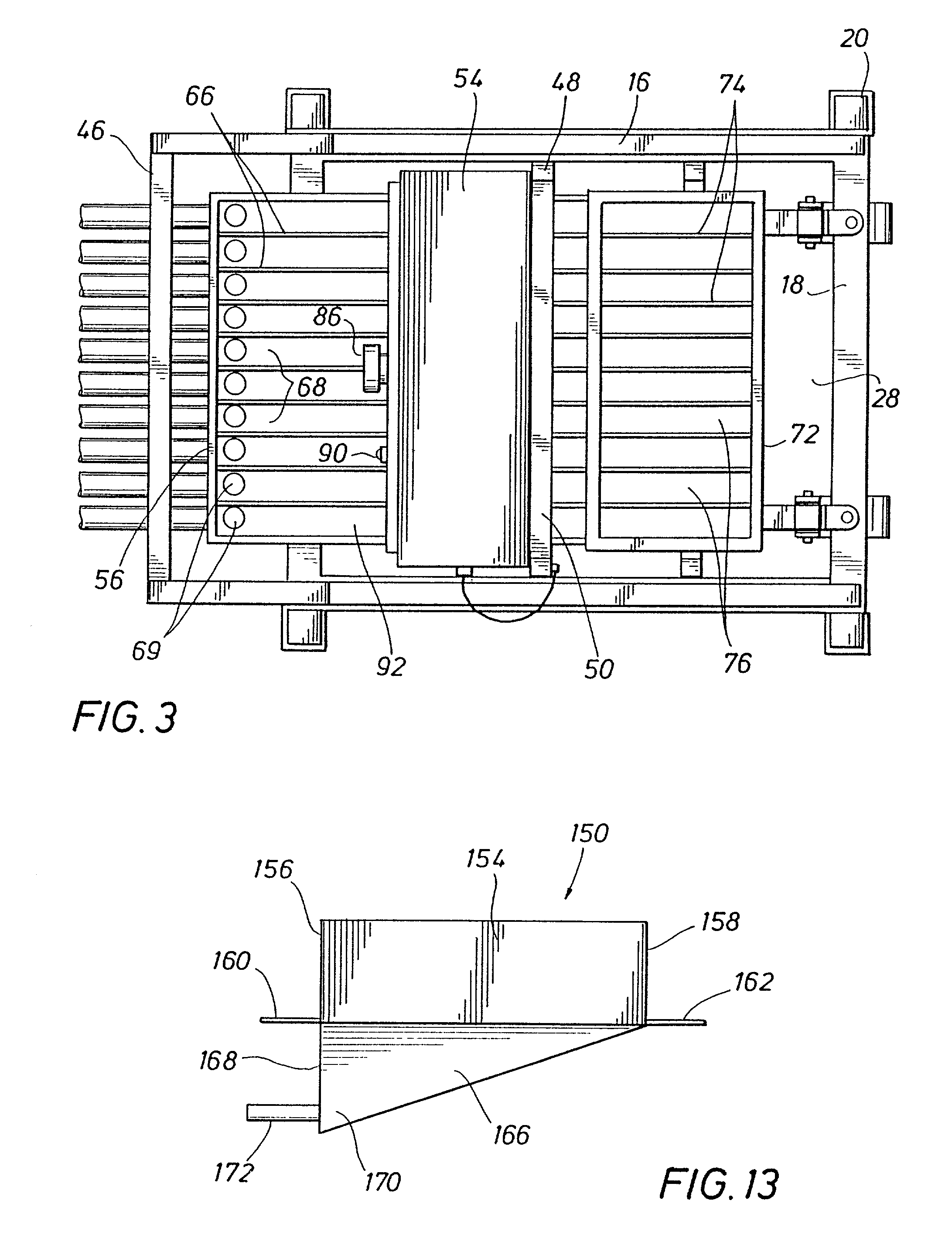Catalytic reactor charging system and method for operation thereof
a charging system and reactor technology, applied in the field of catalytic reactor charging system and method for operation thereof, can solve the problems of uneven fluid pressure and temperature, poor drop time uniformity, uneven tube outages,
- Summary
- Abstract
- Description
- Claims
- Application Information
AI Technical Summary
Benefits of technology
Problems solved by technology
Method used
Image
Examples
Embodiment Construction
[0052] Referring now to the drawings and first to FIGS. 1-3, a mechanized catalyst loading cart that in constructed in accordance with the principles of the present invention is shown generally at 10 and incorporates a cart framework, shown generally at 12, having a wheeled base structure shown generally at 14. The wheeled base 14 is in the form of a rectangular framework base having side members 16 and end members 18 from which depend support legs 20 that are located at respective corners of the rectangular base. The wheeled base structure 14 is provided with a plurality of casters 22 which enable the cart to be rolled along any horizontal surface, such as the horizonal upper tube sheet of a catalytic reactor. To isolate the vibration of the loading cart mechanism from the upper tube sheet of the reactor, cushioned feet 24 are provided for each of the legs 20. These cushioned feet rest upon the upper tube sheet of the reactor after the cart has been properly located for dispensing ...
PUM
| Property | Measurement | Unit |
|---|---|---|
| length | aaaaa | aaaaa |
| time | aaaaa | aaaaa |
| time | aaaaa | aaaaa |
Abstract
Description
Claims
Application Information
 Login to View More
Login to View More - R&D
- Intellectual Property
- Life Sciences
- Materials
- Tech Scout
- Unparalleled Data Quality
- Higher Quality Content
- 60% Fewer Hallucinations
Browse by: Latest US Patents, China's latest patents, Technical Efficacy Thesaurus, Application Domain, Technology Topic, Popular Technical Reports.
© 2025 PatSnap. All rights reserved.Legal|Privacy policy|Modern Slavery Act Transparency Statement|Sitemap|About US| Contact US: help@patsnap.com



